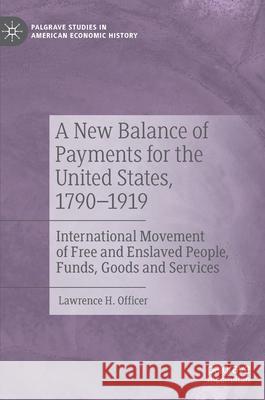A New Balance of Payments for the United States, 1790-1919: International Movement of Free and Enslaved People, Funds, Goods and Services » książka
topmenu
A New Balance of Payments for the United States, 1790-1919: International Movement of Free and Enslaved People, Funds, Goods and Services
ISBN-13: 9783030660987 / Angielski / Twarda / 2021 / 415 str.
A New Balance of Payments for the United States, 1790-1919: International Movement of Free and Enslaved People, Funds, Goods and Services
ISBN-13: 9783030660987 / Angielski / Twarda / 2021 / 415 str.
cena 484,18
(netto: 461,12 VAT: 5%)
Najniższa cena z 30 dni: 462,63
(netto: 461,12 VAT: 5%)
Najniższa cena z 30 dni: 462,63
Termin realizacji zamówienia:
ok. 22 dni roboczych
Bez gwarancji dostawy przed świętami
ok. 22 dni roboczych
Bez gwarancji dostawy przed świętami
Darmowa dostawa!
Kategorie:
Kategorie BISAC:
Wydawca:
Palgrave MacMillan
Seria wydawnicza:
Język:
Angielski
ISBN-13:
9783030660987
Rok wydania:
2021
Wydanie:
2021
Numer serii:
000796214
Ilość stron:
415
Waga:
0.68 kg
Wymiary:
21.01 x 14.81 x 2.54
Oprawa:
Twarda
Wolumenów:
01
Dodatkowe informacje:
Wydanie ilustrowane











